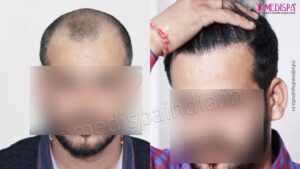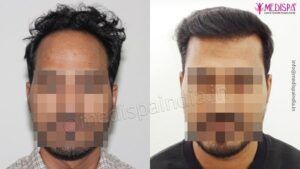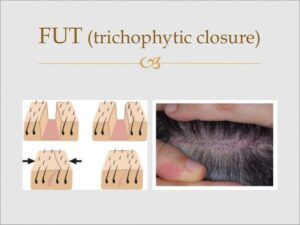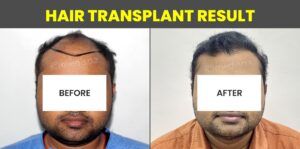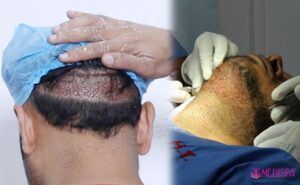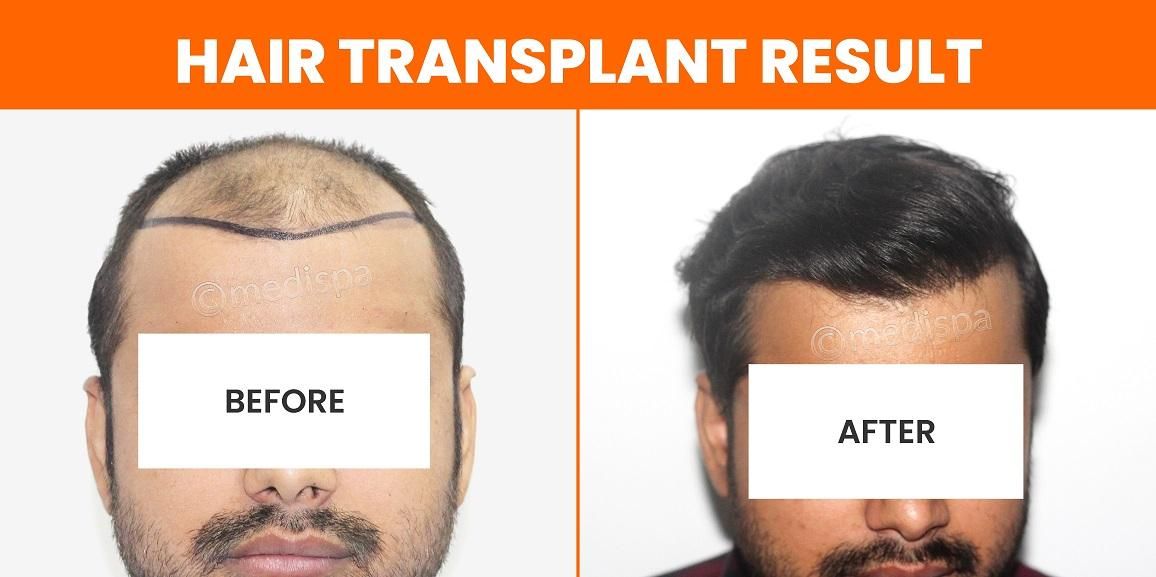
Hair transplantation is a widely performed outpatient cosmetic procedure that entails the extraction of hair follicles from a designated donor site, followed by their implantation into areas experiencing hair loss. The selection of the donor site is based on the density of hair in regions that are less susceptible to dihydrotestosterone (DHT). Common donor areas typically include the back, sides, and body hair, while scalp hair is generally excluded. The demand for hair transplant in India has surged, driven by increasing aesthetic concerns prevalent in contemporary society. Esteemed hair transplant specialists in India have gained international recognition, drawing individuals facing hair loss from across India and beyond for their expertise in hair restoration.
The hair transplant cost in India is considerably lower than in developed countries, with prices ranging from 60,000 to 400,000 INR. This affordability is influenced by various procedural factors. Furthermore, the lower cost of hair transplants in India positions it as an attractive option for those seeking such treatments. The Medispa hair transplant clinic stands out as a premier institution in this domain, delivering outstanding and natural-looking results at competitive prices. Dr. Suneet Soni, recognized as one of the leading hair transplant surgeons globally, is esteemed for his impressive success rates and the assurance of favorable outcomes in hair transplant procedures.
What is hair transplant?
During a hair transplant procedure, follicular grafts are harvested from the donor site using a minimally invasive surgical approach referred to as hair transplantation. The choice to extract these grafts is determined by the density of the existing hair in the donor region. After extraction, the grafts are meticulously crafted to establish a natural hairline before being implanted into the balding areas of the recipient.
There are two primary methods for hair transplantation, each characterized by its graft harvesting technique. The first method, known as Follicular Unit Transplantation (FUT), entails the removal of a small strip of scalp tissue from the donor site. This strip is then processed in a designated area where individual hair follicles, along with the necessary surrounding tissues, are carefully separated. These prepared follicles are subsequently transplanted into the recipient’s balding areas.
The second method, referred to as Follicular Unit Extraction (FUE), involves the direct extraction of individual hair follicular grafts using specialized surgical instruments. These grafts are then placed into the designated recipient sites.
A contemporary approach to addressing severe baldness integrates both FUT and FUE techniques. This combination facilitates the extraction of over 4000 grafts and provides further benefits in comparison to employing either technique independently.
Phases of hair transplant process
You are likely familiar with the basic principles of hair transplantation; therefore, it is essential to understand the complexities of the procedure. In the following section, we will examine the various stages involved in hair transplantation.
The hair transplant process consists of several key stages.
- Planning: The initial planning stage is critical, as it involves tailoring the procedure to meet the unique requirements of each patient. This planning takes into account the degree of hair loss, the density of hair in the donor region, and the patient’s desired results. After finalizing the plan, laboratory tests are conducted to assess the patient’s medical eligibility.
- Extraction phase: During the extraction phase, the first action is to outline a preliminary hairline with a marker. Subsequently, hair follicles are extracted from the designated donor area utilizing FUT and FUE techniques. The choice of hair transplant method is influenced by factors such as the area and severity of baldness, the desired hair density, and the preferences of the patient.
- Slitting phase: In the slitting phase, the recipient area is meticulously prepared in accordance with the desired hairline design. It is essential to pay close attention to the appropriate angulation and arrangement to ensure a natural appearance in the hair transplant.
- Transplantation phase: During the transplantation phase, the physician carefully places the extracted hair follicles into the prepared incisions. A team of highly trained specialists employs high magnification techniques to guarantee precise placement of the hair follicles. Throughout this process, great care is taken to align with the patient’s aesthetic goals.
The overall duration of a hair transplant procedure typically varies from 4 to 9 hours, influenced by the surgeon’s expertise and the extent of hair loss. In cases of advanced baldness, multiple sessions may be necessary to achieve the desired results.
To achieve a successful result, it is essential to meticulously choose a physician who has undergone advanced training and has extensive experience in hair transplant surgery. A critical aspect of this process is selecting a reputable clinic that employs a qualified surgeon to carry out the procedure. For a hair transplant that is both reliable and remarkable, it is strongly advised to arrange a consultation at the esteemed Medispa hair transplant clinic situated in either Delhi or Jaipur.
Effectiveness of hair transplant
Hair transplantation procedures are highly effective in adequately covering bald areas and achieving results that appear natural. In comparison to temporary solutions such as wigs, medications, or synthetic hair, it stands out as the superior choice. We appreciate the advancements in technology and innovative techniques that have contributed to the significant success of hair transplantation. Even in cases of advanced baldness, a combination of methods can be employed, and options for body hair transplantation are also available. As most techniques result in minimally visible scars, concerns regarding noticeable scarring are currently minimal. The success rate can exceed 96%, provided that the procedure is performed by a skilled and experienced surgeon.

